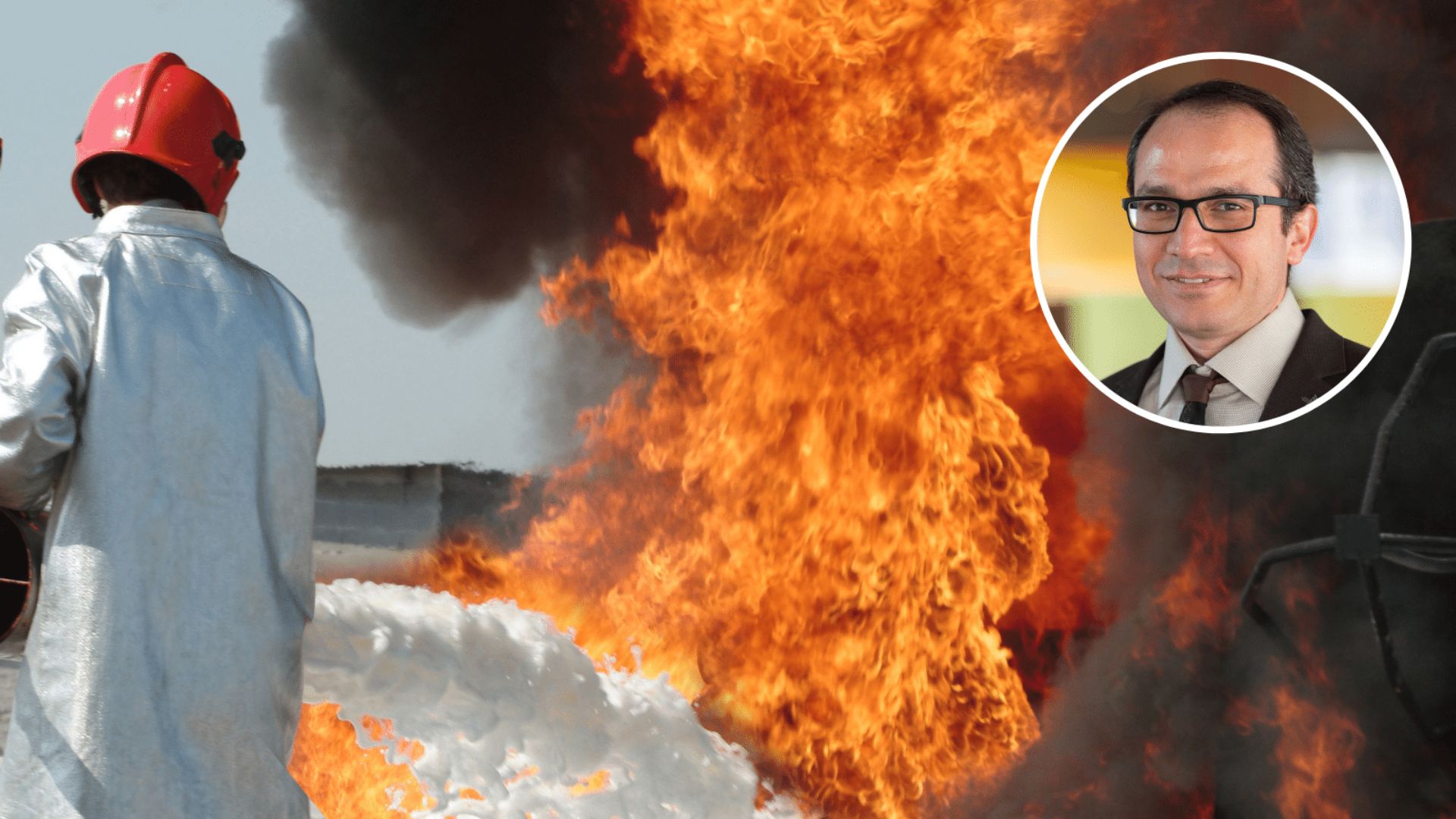- Charles Sturt research is helping a regional NSW council to understand and remediate a PFAS contaminated site
- Research undertaken in collaboration with Bathurst Regional Council on a contaminated site at Bathurst Airport
- Site is categorised as industrial/commercial land use, and the use of groundwater for drinking purposes is highly unlikely
Research by Charles Sturt University engineering academics is helping a regional NSW council to understand and remediate a site contaminated with chemicals.
The chemicals are known as PFAS (Per- and poly-fluoroalkyl substances), and PFOS (perfluorooctane sulfonate). Since the 1940s they have been used in a range of consumer products, and are found in fire retardants, particularly at airfields.
The research by Dr Reza Mahinroosta (pictured, inset), Dr Lalantha Senevirathna and Dr Miao Li in the Charles Sturt Engineering program, all members of the Charles Sturt Institute for Land, Water and Society (ILWS), was conducted in collaboration with Bathurst Regional Council on a site at Bathurst Airport.
“Per- and polyfluoroalkyl substances (PFAS) polluted some localised areas at Bathurst Airport from around the 1970s until 1998 due to use of Aqueous Fire-Fighting Foams (AFFF),” Dr Mahinroosta said.
“These chemicals are toxic, resist biodegradation, transfer in the environment easily, and accumulate in the body of flora and fauna.
“The prediction of their gradual movement in the environment is of paramount importance for environmental managers to decide on appropriate remediation strategies.”
The researchers’ paper, ‘Prediction of migration of PFOS in soil and groundwater in a regional NSW’, was presented at the Charles Sturt ILWS 2020 online conference in November.
Researchers began their investigative project in 2018 and examined various aspects of PFAS such as PFAS monitoring, modelling and predictions, remediation and treatment, and adverse environmental impacts of PFAS.
To simulate transport modelling of PFOS (a dominant form of PFAS), the researchers used professional software (Geostudio). This encompassed major functions of the environmental transportation of the contaminant to predict the level of PFOS in soil and groundwater due to climate interaction for 100 years.
“The initial physico-chemical parameters and adsorption characteristics of the soil were determined from in-situ tests and mechanical and chemical analysis in the laboratory,” Dr Mahinroosta said.
“The model showed that with the current situation with no remediation action, the level of PFOS in the groundwater postulates the guideline value for drinking water after 25 years, with a constant increase in its level up to 100 years.
“If the fire shed and the concrete slab at the airport is removed, the impact on the groundwater will be even higher (up to 50 times guideline value). The results of the modelling are in good agreement with the data from the monitoring well in proximity to the contaminated site.”
Dr Mahinroosta emphasised the site is categorised as industrial/commercial land use, and the use of groundwater for drinking purposes is highly unlikely.
“We recommend not to remove the concrete slab without any remediation of the site. The current concrete slab and the fire shed protect the area against rainfall and effectively reduce PFAS migration into groundwater.” he said.
Bathurst Regional Council will continue to conduct investigations at the airport to inform future management options at the site which will reduce the potential impact to the community.
This work was supported by Bathurst Regional Council, New South Wales, Australia (Grant No: RM102988).






Social
Explore the world of social